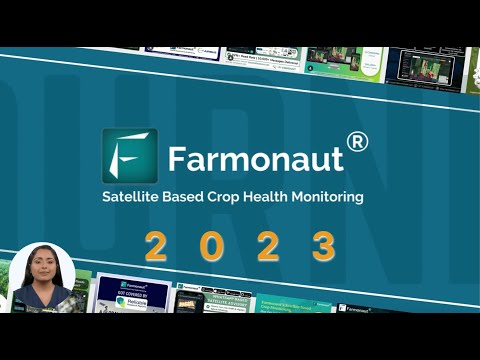USDA Equity Commission Concludes: Shaping a More Inclusive Future for American Agriculture
“The USDA Equity Commission’s work spanned 3 years, addressing disparities in rural agriculture resources and equity initiatives.”
As we reflect on the recent conclusion of the USDA’s Equity Commission’s final meeting, we find ourselves at a pivotal moment in the landscape of American agriculture. This milestone marks not just the end of a three-year journey, but the beginning of a new era in agricultural policy reform and inclusive farming practices. At Farmonaut, we recognize the profound implications these developments have for our users and the broader agricultural community.
The Equity Commission: A Catalyst for Change
The USDA Equity Commission has been at the forefront of addressing long-standing disparities in rural agriculture resources and championing equitable agricultural development. Their work has been crucial in highlighting the need for sustainable agriculture equity and improved farm program accessibility for underserved farmers across the United States.

Key Initiatives and Recommendations
The Commission’s final gathering focused on enhancing equity initiatives within USDA programs. Let’s delve into some of the key recommendations:
- Improving Outreach to Marginalized Communities: The Commission emphasized the need for better agricultural community outreach, ensuring that information about USDA programs reaches all corners of rural and urban farming communities.
- Ensuring Fair Distribution of Financial Assistance: A critical aspect of the Commission’s work involves creating mechanisms for more equitable distribution of financial resources, addressing historical imbalances in farm program accessibility.
- Integrating Equity into USDA Operations: The Commission called for a comprehensive approach to embedding equity considerations into every aspect of USDA’s functions, from policy formulation to program implementation.
Impact on American Agriculture
The implications of these equity initiatives are far-reaching. By fostering inclusive farming practices and enhancing support for underserved farmers, the USDA is paving the way for a more diverse and resilient agricultural sector. This approach not only addresses historical injustices but also leverages the unique contributions of all communities to strengthen American agriculture.
Sustainable Agriculture Equity: A Path Forward
One of the critical focuses of the Equity Commission has been on promoting sustainable agriculture equity. This concept goes beyond mere equal access to resources; it encompasses the idea that sustainable farming practices should be accessible and implementable by all farmers, regardless of their background or scale of operation.
At Farmonaut, we align with this vision through our commitment to making precision agriculture accessible to farmers worldwide. Our satellite-based farm management solutions, available via Android, iOS, and web applications, support this goal by providing affordable access to advanced agricultural technology.


Addressing Disparities in Rural Agriculture Resources
The Equity Commission’s work has shed light on the significant disparities in access to resources that exist in rural agricultural communities. These disparities encompass a range of issues, from access to technology and information to financial resources and market opportunities.
“The Commission’s efforts aim to impact millions of underserved farmers by improving outreach and ensuring fair distribution of financial assistance.”
To address these challenges, the Commission has recommended several strategies:
- Enhanced Digital Infrastructure: Improving broadband access in rural areas to enable farmers to leverage digital agricultural tools and resources.
- Tailored Financial Products: Developing financial products and services that cater to the unique needs of small and underserved farmers.
- Education and Training Programs: Implementing targeted education and training initiatives to build capacity in modern farming techniques and technologies.
At Farmonaut, we contribute to bridging this gap through our Jeevn AI Advisory System, which delivers real-time insights and expert crop management strategies to farmers, regardless of their location or scale of operation.
Agricultural Policy Reform: A New Era
The Equity Commission’s work signals a significant shift in agricultural policy reform. By placing equity at the center of policy considerations, the USDA is setting a new standard for inclusive governance in the agricultural sector. This approach involves:
- Data-Driven Decision Making: Utilizing comprehensive data to identify and address inequities in program outcomes.
- Participatory Policy Development: Engaging diverse stakeholders, including underserved farmers, in the policy-making process.
- Continuous Evaluation and Adjustment: Implementing mechanisms for ongoing assessment and refinement of equity initiatives.
These policy reforms align with Farmonaut’s mission of leveraging data and technology to empower farmers. Our API and developer documentation enable integration of our satellite and weather data into various agricultural systems, supporting informed decision-making at all levels.

Inclusive Farming Practices: From Policy to Field
The transition from policy recommendations to on-the-ground implementation of inclusive farming practices is a critical next step. This process involves:
- Culturally Appropriate Outreach: Developing outreach materials and strategies that resonate with diverse farming communities.
- Accessible Technology: Ensuring that technological innovations in agriculture are designed with inclusivity in mind.
- Collaborative Research: Fostering partnerships between research institutions and diverse farming communities to address specific challenges faced by underserved farmers.
Farmonaut’s approach to inclusive farming includes providing our satellite-based crop health monitoring tools in multiple languages and offering flexible pricing models to accommodate farms of various sizes.
The Role of Technology in Advancing Agricultural Equity
As we move forward in implementing the Equity Commission’s recommendations, technology plays a crucial role in leveling the playing field for all farmers. Advanced agricultural technologies, when made accessible, can significantly enhance productivity, sustainability, and profitability for underserved farmers.
Key technological advancements supporting equity in agriculture include:
- Remote Sensing and GIS: These technologies enable precise monitoring of crop health and soil conditions, allowing farmers to make data-driven decisions regardless of farm size.
- AI and Machine Learning: Predictive analytics can help farmers anticipate and prepare for challenges, from pest infestations to climate-related risks.
- Blockchain for Traceability: Enhancing transparency in supply chains, which can particularly benefit small-scale farmers by providing direct market access and fair pricing.
Farmonaut integrates these technologies into our platform, making them accessible to farmers through our user-friendly applications and API services.
Challenges and Opportunities in Implementing Equity Initiatives
While the Equity Commission’s recommendations chart a clear path forward, their implementation comes with both challenges and opportunities:
Challenges:
- Cultural and Language Barriers: Effectively communicating and implementing new programs across diverse farming communities.
- Technology Adoption: Ensuring that new technologies are not only available but also adopted and effectively utilized by all farmer groups.
- Resource Allocation: Balancing the distribution of limited resources to address historical inequities while supporting the broader agricultural sector.
Opportunities:
- Innovation in Service Delivery: Developing new, more inclusive models for delivering agricultural services and support.
- Economic Growth: Tapping into the potential of underserved farming communities to contribute to agricultural productivity and rural economic development.
- Environmental Stewardship: Leveraging diverse farming practices and knowledge to enhance sustainable agriculture and conservation efforts.
At Farmonaut, we see these challenges as opportunities to innovate and improve our services. Our commitment to making precision agriculture accessible aligns closely with the goals of equitable agricultural development.
The Impact on Climate-Smart Agriculture
The Equity Commission’s work intersects significantly with efforts to promote climate-smart agriculture. As climate change poses increasing challenges to farmers across the United States, ensuring that all farmers have access to the tools and knowledge needed to adapt is crucial.
Key aspects of climate-smart agriculture that benefit from equity initiatives include:
- Soil Health Management: Promoting practices that improve soil health and carbon sequestration across diverse farming systems.
- Water Conservation: Implementing efficient irrigation technologies and water management practices that are accessible to all farmers.
- Crop Diversification: Supporting underserved farmers in diversifying their crops to enhance resilience to climate-related risks.
Farmonaut’s satellite-based monitoring and AI advisory systems support these efforts by providing farmers with real-time data on soil moisture, crop health, and weather patterns, enabling more efficient resource management and climate adaptation strategies.
The Future of American Agriculture: A Vision of Inclusivity
As we look to the future, the work of the USDA Equity Commission sets the stage for a more inclusive and resilient American agricultural sector. This vision encompasses:
- Diverse Farming Systems: Recognizing and supporting a wide range of farming practices, from traditional methods to high-tech precision agriculture.
- Empowered Rural Communities: Strengthening the economic and social fabric of rural areas through equitable access to resources and opportunities.
- Innovation-Driven Growth: Fostering an environment where agricultural innovations are developed and implemented with equity considerations at the forefront.
Farmonaut is committed to being a part of this inclusive future. Our ongoing development of accessible, affordable precision agriculture tools aligns with the goal of empowering all farmers to thrive in a changing agricultural landscape.
USDA Equity Commission Initiatives Impact Matrix
| Initiative | Underserved Farmers | Rural Communities | Agricultural Industry |
|---|---|---|---|
| Improving Outreach to Marginalized Communities | High – Increased access to USDA programs and resources | Medium – Enhanced community engagement and resource awareness | Medium – Broader participant base in agricultural programs |
| Fair Distribution of Financial Assistance | High – Improved access to capital and financial support | High – Economic boost through increased investment in local farms | Medium – More diverse and resilient agricultural sector |
| Integrating Equity into USDA Operations | High – More inclusive policies and program design | Medium – Better representation in agricultural decision-making | High – Systemic changes leading to a more equitable industry |
Conclusion: A Call to Action
The conclusion of the USDA Equity Commission’s work is not an end, but a beginning. It’s a call to action for all stakeholders in the agricultural sector to embrace and implement these equity initiatives. As we at Farmonaut continue to innovate in agricultural technology, we recognize the crucial role that these developments in agricultural community outreach and policy play in shaping the future of farming.
We encourage our users and all those involved in agriculture to:
- Stay informed about the implementation of these equity initiatives
- Actively participate in local and national conversations about agricultural equity
- Explore and adopt technologies that support inclusive and sustainable farming practices
- Collaborate across diverse farming communities to share knowledge and resources
Together, we can build a more inclusive, sustainable, and prosperous future for American agriculture. Let’s embrace this opportunity to shape an agricultural landscape where every farmer has the chance to thrive.
FAQ Section
Q1: What is the USDA Equity Commission?
A1: The USDA Equity Commission is a body established to address disparities in rural agriculture resources and promote equity initiatives within USDA programs. It focuses on improving access to USDA services for underserved communities and ensuring fair distribution of agricultural resources.
Q2: How does the Equity Commission’s work impact individual farmers?
A2: The Commission’s recommendations aim to improve farm program accessibility, enhance outreach to marginalized communities, and ensure fairer distribution of financial assistance. This can lead to better access to resources, technology, and support for individual farmers, particularly those who have been historically underserved.
Q3: What role does technology play in agricultural equity?
A3: Technology plays a crucial role in advancing agricultural equity by providing tools for precision farming, data-driven decision-making, and improved resource management. Platforms like Farmonaut make these technologies more accessible to a wider range of farmers, supporting the goals of equity initiatives.
Q4: How can farmers stay informed about these equity initiatives?
A4: Farmers can stay informed by regularly checking the USDA website, participating in local agricultural extension programs, and engaging with farming organizations. Additionally, using platforms like Farmonaut can help farmers access up-to-date information and technologies that support equitable farming practices.
Q5: What are some challenges in implementing agricultural equity initiatives?
A5: Key challenges include overcoming cultural and language barriers, ensuring widespread technology adoption, and balancing resource allocation. Additionally, addressing historical inequities while supporting the broader agricultural sector requires careful planning and implementation.



